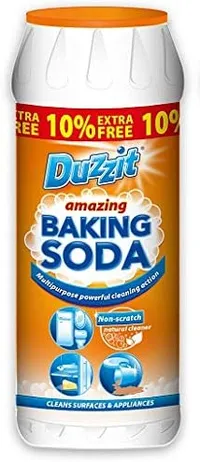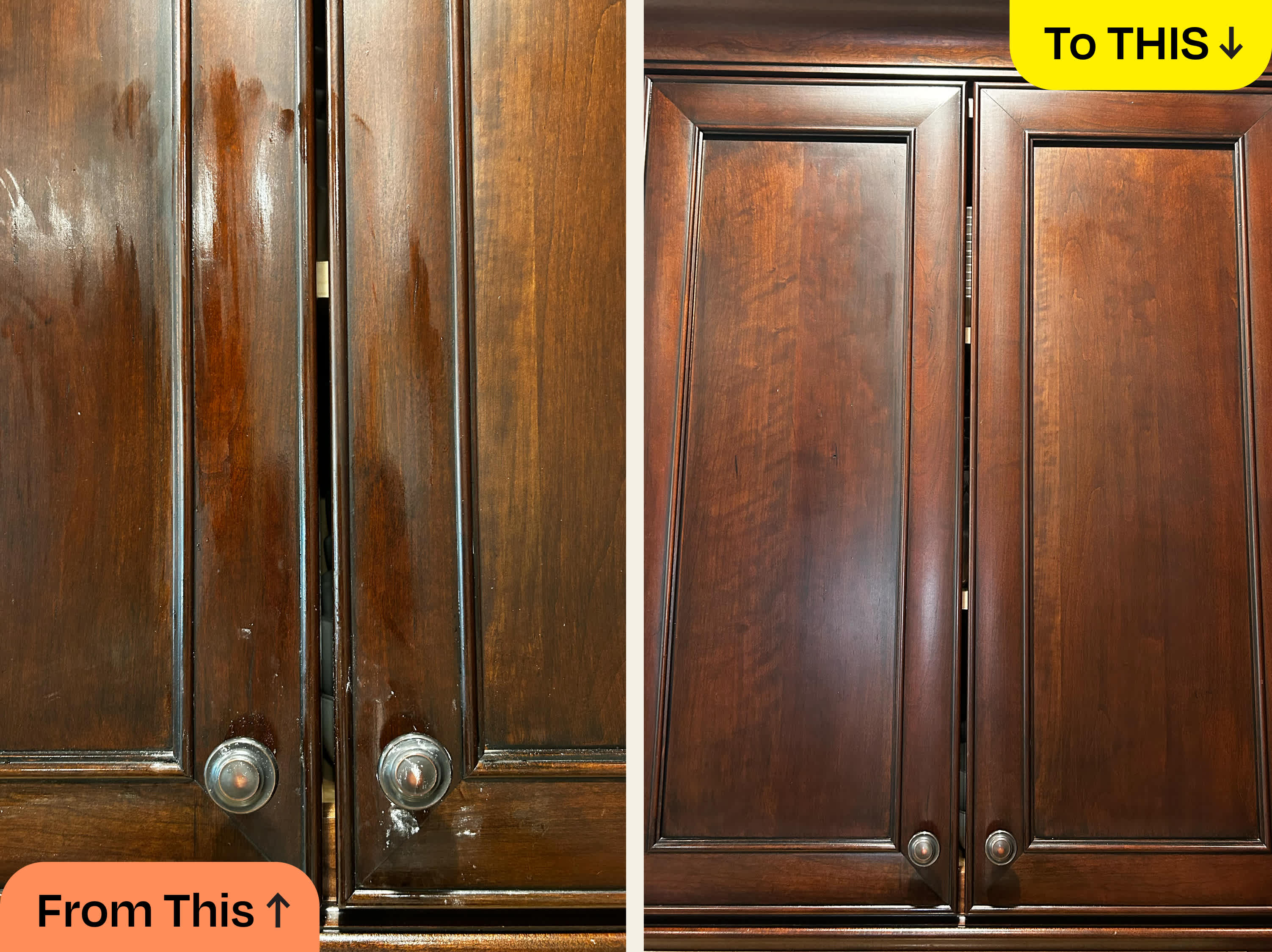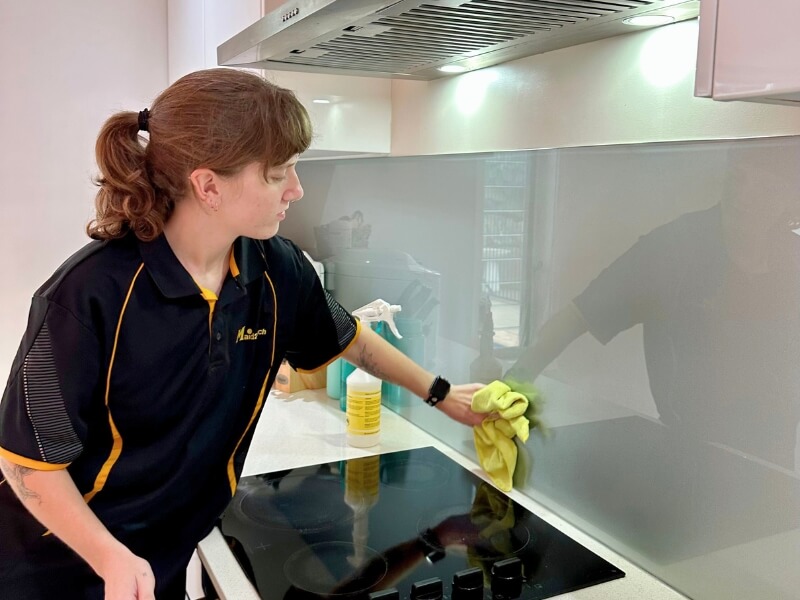Are grease stains taking over your kitchen walls and making your space look dull? You’re not alone, and the good news is that these stubborn marks don’t have to stay forever.
Imagine walking into your kitchen and seeing fresh, clean walls that brighten up the entire room. In this guide, you’ll discover simple, effective ways to banish those greasy spots for good. Keep reading, and you’ll learn easy tips that save you time and effort—so you can enjoy a spotless kitchen without stress.
Causes Of Grease Stains
Grease stains on kitchen walls can be frustrating and stubborn. To tackle them effectively, it helps to understand where they come from and why your walls become magnets for grease. Knowing the causes can guide you in preventing future stains and maintaining a cleaner kitchen environment.
Common Kitchen Sources
Grease mainly comes from cooking oils, butter, and food splatters. When you fry or sauté, tiny droplets of oil can escape and settle on nearby surfaces.
Other sources include:
- Steam carrying grease particles from boiling or frying
- Handling greasy utensils and then touching walls
- Accidental splashes while transferring food
Have you noticed how the area near your stove tends to get dirtier faster? That’s where most grease originates, especially if you cook frequently.
Why Walls Attract Grease
Kitchen walls often have a slightly porous surface that traps grease easily. Even smooth paint can hold onto tiny oil particles, making stains appear quickly.
Grease is sticky by nature, so it clings to walls and doesn’t wash off easily with just water. Warm air from cooking also helps grease particles stay airborne longer, increasing the chance they settle on walls.
Think about your kitchen’s ventilation—poor airflow means grease particles linger and settle more. So, improving your kitchen’s exhaust system can reduce how much grease ends up on your walls.

Credit: www.realhomes.com
Essential Cleaning Supplies
Grease stains on kitchen walls can be tough to remove without the right supplies. Choosing the proper cleaning ingredients and tools makes the task easier and faster. Having these essentials ready helps you tackle stains effectively and keeps your kitchen walls spotless.
Household Ingredients
- White vinegar – cuts through grease and grime well
- Baking soda – gently scrubs and lifts stains
- Dish soap – breaks down oily residues easily
- Warm water – helps dissolve cleaning agents and grease
- Lemon juice – adds natural acidity for extra cleaning power
Recommended Tools
- Soft sponge – cleans without scratching paint or wallpaper
- Microfiber cloth – traps dirt and absorbs moisture quickly
- Spray bottle – mixes and applies cleaning solutions evenly
- Bucket – holds warm water and cleaning mixtures
- Old toothbrush – reaches small crevices and corners
Quick Cleaning Methods
Grease stains on kitchen walls can make your space look dirty fast. Quick cleaning methods help remove these stains without much effort. These easy solutions use common household items. They clean effectively and save your time.
Soap And Warm Water
Start by mixing mild dish soap with warm water. Dip a soft cloth or sponge into the solution. Gently scrub the grease spots on the wall. Avoid soaking the wall to prevent damage. Rinse the cloth frequently and change the water if it becomes dirty. Dry the area with a clean towel after cleaning.
Vinegar Solution
Combine equal parts white vinegar and warm water in a spray bottle. Spray the solution directly on the grease stains. Let it sit for a few minutes to allow the grease to break down. Wipe the area with a clean cloth or sponge. Repeat if the stain remains. Vinegar helps cut grease and kills some bacteria.
Baking Soda Paste
Mix baking soda with a small amount of water to form a paste. Apply the paste to the grease stains using a soft cloth. Gently rub in circular motions to lift the grease. Let it sit for 10 minutes for tough stains. Wipe off the paste with a damp cloth. Baking soda acts as a mild abrasive and deodorizer.

Credit: www.thekitchn.com
Deep Cleaning Techniques
Deep cleaning techniques remove tough grease stains from kitchen walls effectively. These methods target grease buildup that simple wiping cannot handle. Regular deep cleaning keeps your kitchen fresh and safe. Two popular techniques include using degreaser products and steam cleaning. Both break down grease and restore wall surfaces.
Degreaser Products
Degreaser products are specially made to dissolve grease quickly. They come in sprays, liquids, or wipes. Apply the product directly to the stained area. Let it sit for a few minutes to allow the grease to break down. Use a soft cloth or sponge to scrub gently. Rinse the wall with clean water afterward. Repeat if the stain remains. Choose eco-friendly degreasers for safer use around food.
Steam Cleaning
Steam cleaning uses hot steam to loosen grease from walls. It is chemical-free and safe for most surfaces. Move the steam cleaner slowly over the stained area. The heat softens the grease, making it easy to wipe away. Use a microfiber cloth to absorb moisture and dirt. Steam cleaning also kills germs and bacteria. This method saves time and reduces scrubbing effort. Ideal for deep, stubborn grease stains.
Preventing Future Stains
Preventing future grease stains helps keep kitchen walls clean longer. It reduces the need for frequent scrubbing and repainting. Simple changes in your kitchen setup and wall care can make a big difference. Below are effective ways to protect your walls from grease damage.
Kitchen Ventilation Tips
Good ventilation reduces grease buildup on walls. It clears smoke and cooking fumes quickly. Consider these tips:
- Use an exhaust fan while cooking to remove steam and grease particles.
- Open windows to allow fresh air to flow through the kitchen.
- Keep the range hood clean and replace filters regularly.
- Run ventilation systems for a few minutes after cooking ends.
Proper airflow prevents grease from settling on surfaces. This keeps kitchen walls cleaner and fresher.
Protective Wall Treatments
Applying protective coatings creates a barrier against grease stains. It makes cleaning easier and faster. Options include:
- Washable paints designed for kitchens and bathrooms.
- Clear sealants that repel grease and moisture.
- Wall panels or tiles that wipe clean easily.
- Special wallpaper with grease-resistant surfaces.
Choose treatments suitable for your kitchen style and budget. Regularly inspect treated walls to maintain protection.
Dealing With Stubborn Stains
Stubborn grease stains on kitchen walls can test your patience. They refuse to budge with simple cleaning and often leave behind a dull, sticky residue. Tackling these tough spots requires more than just regular scrubbing; you need smart strategies that target the stain without damaging your paint or wallpaper.
Spot Treatment Tricks
Before reaching for harsh chemicals, try a gentle spot treatment. Mix a few drops of dish soap with warm water and apply it to the stain using a soft cloth or sponge. Let it sit for a few minutes to break down the grease, then wipe it off with a clean, damp cloth.
If that doesn’t work, baking soda can be a powerful ally. Make a paste with water and gently rub it onto the stain using a microfiber cloth. Baking soda’s mild abrasive nature lifts grease without scratching your walls.
For extremely stubborn marks, white vinegar diluted with water offers a natural grease-fighting solution. Spray the mixture, wait a moment, and wipe clean. Be cautious on delicate paint finishes—test a small hidden area first to avoid damage.
When To Repaint
Sometimes, no amount of cleaning can fully restore your wall’s appearance. If stains have deeply penetrated or the paint is peeling, repainting might be your best option. It’s a chance to refresh your kitchen while sealing out future grease buildup.
Before repainting, clean the walls thoroughly to remove any remaining grease. Use a primer designed for kitchens or high-moisture areas to ensure proper paint adhesion and durability.
Ask yourself: Is the effort of constant cleaning worth it, or would a fresh coat of paint save you time and frustration? Repainting can be an investment that keeps your kitchen looking clean and bright long-term.

Credit: www.maid2match.com.au
Frequently Asked Questions
How Do I Remove Grease Stains From Kitchen Walls?
Use a mixture of warm water, dish soap, and vinegar. Apply with a sponge, scrub gently, then rinse and dry.
What Household Items Clean Grease Stains Effectively?
Baking soda, vinegar, and dish soap are excellent for cleaning grease stains on walls. They break down grease safely.
Can I Use Commercial Cleaners For Kitchen Wall Grease?
Yes, commercial degreasers work well but test on a small area first to avoid damage or discoloration.
How Often Should I Clean Kitchen Walls To Prevent Grease Buildup?
Clean kitchen walls weekly to prevent grease buildup. Regular cleaning keeps stains from becoming tough and hard to remove.
Conclusion
Grease stains on kitchen walls can be stubborn. But they’re not unbeatable. Using simple methods, you can remove them effectively. Start with a gentle cleaner. Dish soap mixed with warm water works well. For tougher stains, try vinegar or baking soda.
Always test a small area first. Consistent cleaning prevents buildup. Regularly wipe down walls to avoid future stains. Remember, maintaining a clean kitchen enhances your cooking experience. So, tackle those stains today and enjoy a spotless kitchen. Keeping your kitchen walls clean adds to a pleasant home environment.

